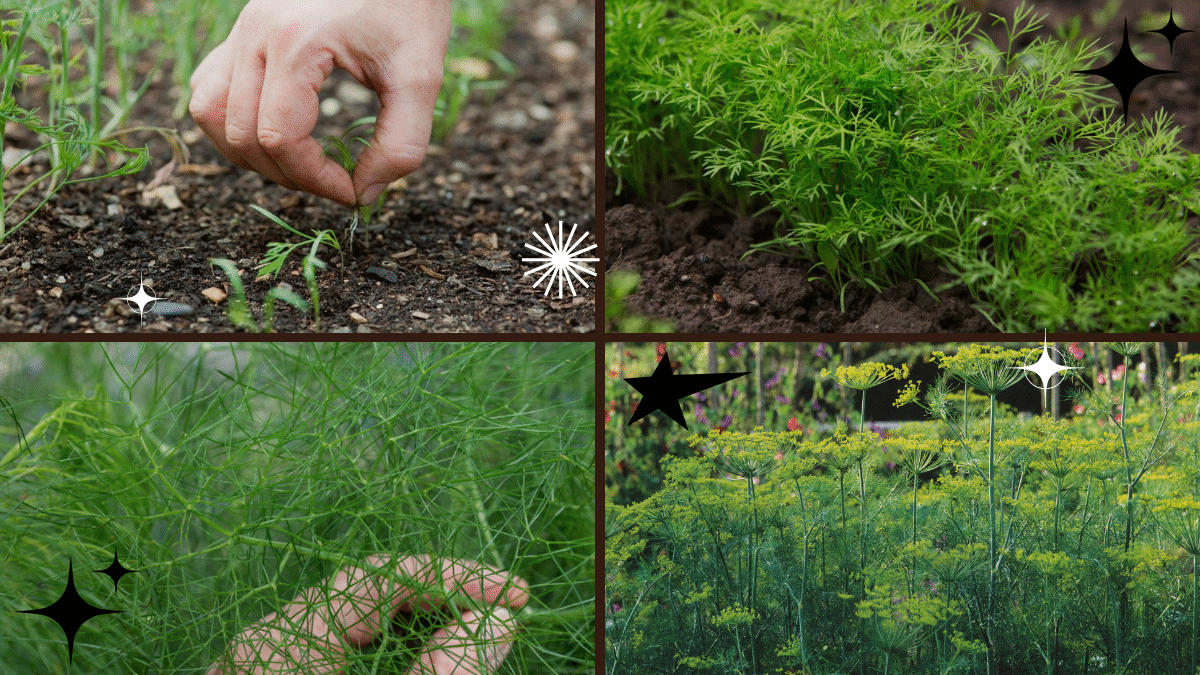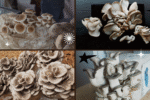Fresh, fragrant, and wonderfully versatile — dill is one of those herbs every home gardener should grow. Whether you’re using it to flavor pickles, fish dishes, or summer salads, there’s nothing quite like the taste of freshly picked dill from your own garden.
The best part? Dill is easy to grow, thrives in most gardens, and practically takes care of itself once it gets started. If you’ve ever wondered how to successfully plant and care for dill, this guide has you covered from seed to harvest.

Why Grow Dill in Your Herb Garden?
Dill (Anethum graveolens) is an annual herb known for its feathery green leaves and aromatic seeds. It’s loved for both culinary and ornamental purposes — and it attracts beneficial pollinators like butterflies and bees.
Reasons to plant dill:
- Quick-growing and beginner-friendly
- Enhances dishes with a fresh, grassy flavor
- Produces seeds and leaves for dual-purpose use
- Attracts pollinators and beneficial insects
- Acts as a companion plant, repelling certain pests

When to Plant Dill
Dill thrives in warm weather and grows best when direct-seeded into the garden after the danger of frost has passed.
- Plant outdoors: Once soil temperatures reach 60–70°F (16–21°C)
- In most regions, this means spring through early summer
- Successive sowing every 2–3 weeks ensures a continuous harvest
Pro tip: Dill doesn’t transplant well due to its long taproot, so it’s best sown directly into its final growing spot.

Choosing the Right Spot
Dill is fairly adaptable but prefers certain conditions to flourish.
Ideal growing conditions:
- Full sun — at least 6–8 hours daily
- Well-draining soil with a slightly acidic to neutral pH (6.0–7.5)
- Sheltered location if your garden is windy, as dill’s tall stems can topple over
Companion planting:
Dill pairs well with cabbage, onions, cucumbers, lettuce, and asparagus, but keep it away from carrots as it can stunt their growth.

How to Prepare the Soil
Like most herbs, dill appreciates fertile but well-drained soil.
Soil preparation steps:
- Loosen the soil to a depth of 8–12 inches
- Remove rocks, debris, and weeds
- Work in compost or aged manure to enrich the soil
- Mix in a balanced, all-purpose organic fertilizer if needed
Pro tip: Avoid overly rich soil or excessive fertilizer, as it can lead to lush foliage but weaker flavor.
How to Plant Dill Seeds
Dill is one of the simplest herbs to start from seed.
Planting steps:
- Sow seeds ¼ inch deep directly in the soil
- Space seeds about 12 inches apart (or thin later)
- Cover lightly with soil and gently water
Watering:
Keep soil evenly moist during germination, which usually takes 7–14 days
Succession planting:
To ensure a steady supply of fresh leaves, sow new seeds every 2–3 weeks until midsummer.
Caring for Your Dill Plants
Once your dill seedlings have emerged, they require minimal care.
Watering
- Water regularly to keep the soil lightly moist but not waterlogged
- Avoid letting the soil dry out completely during hot weather
- Water at the base to prevent mildew on foliage
Thinning
When plants are about 3–4 inches tall, thin them to 12–18 inches apart to allow good air circulation and strong growth.
Mulching
Apply a thin layer of organic mulch like straw or shredded leaves to:
- Retain soil moisture
- Suppress weeds
- Keep roots cool
Fertilizing
If soil is moderately fertile, dill won’t need extra feeding. In poor soil, use a diluted balanced liquid fertilizer once or twice during the growing season.
Attracting Pollinators
Dill’s small, umbrella-shaped yellow flowers attract beneficial insects:
- Bees
- Ladybugs
- Lacewings
- Swallowtail butterflies (they often lay their eggs on dill)
This makes dill a valuable addition to pollinator-friendly herb gardens.
Harvesting Dill
You can harvest both the leaves (dill weed) and seeds from the same plant.
Harvesting Leaves
- Begin harvesting leaves when plants reach 6–8 inches tall
- Snip leaves in the morning when oils are most concentrated
- Use fresh for the best flavor or dry/freeze for later
Pro tip: Regular harvesting encourages bushier growth.
Harvesting Dill Seeds
- Allow plants to flower and form seed heads
- When seed heads turn brown and dry, cut them off
- Place seed heads in a paper bag, hang upside down, and let seeds fall as they dry
- Store in an airtight container for pickling or seasoning
How to Keep Dill From Bolting
In hot weather, dill quickly flowers (bolts) and turns bitter.
To prevent premature bolting:
- Keep soil consistently moist
- Provide light afternoon shade in hot climates
- Use succession planting to ensure fresh, tender growth all season
Companion Planting Benefits
Dill is an excellent companion herb for several vegetables:
- Cabbage family plants: Repels cabbage worms
- Cucumbers: Attracts pollinators and improves growth
- Lettuce: Deters aphids and improves flavor
- Asparagus: Attracts beneficial insects
Avoid planting near carrots and tomatoes, as dill can inhibit their growth or seed too readily among them.
Common Pests and Problems
Dill is relatively pest-free, but here’s what to watch out for:
- Aphids: Can cluster on tender leaves; treat with insecticidal soap
- Caterpillars (Swallowtail butterfly larvae): Harmless and beneficial, but if you want to keep foliage for yourself, gently relocate them
- Powdery mildew: Avoid overhead watering and ensure good air circulation
Using Fresh Dill in the Kitchen
Freshly picked dill enhances countless recipes:
- Chopped over grilled fish or salmon
- Mixed into yogurt or sour cream dips
- Tossed with new potatoes and butter
- Added to pickles, salads, and dressings
- Baked into breads and herb butters
Final Thoughts
Growing dill in your herb garden is one of the easiest and most rewarding choices you can make. It’s fast-growing, flavorful, beautiful, and beneficial to the garden ecosystem. With just a bit of sunshine, regular watering, and occasional harvesting, you’ll enjoy a continuous supply of this fragrant herb all season long.
Whether you’re a culinary enthusiast, a beginner gardener, or someone looking to attract more pollinators, dill is a must-have addition to your garden beds or containers.





Leave A Comment